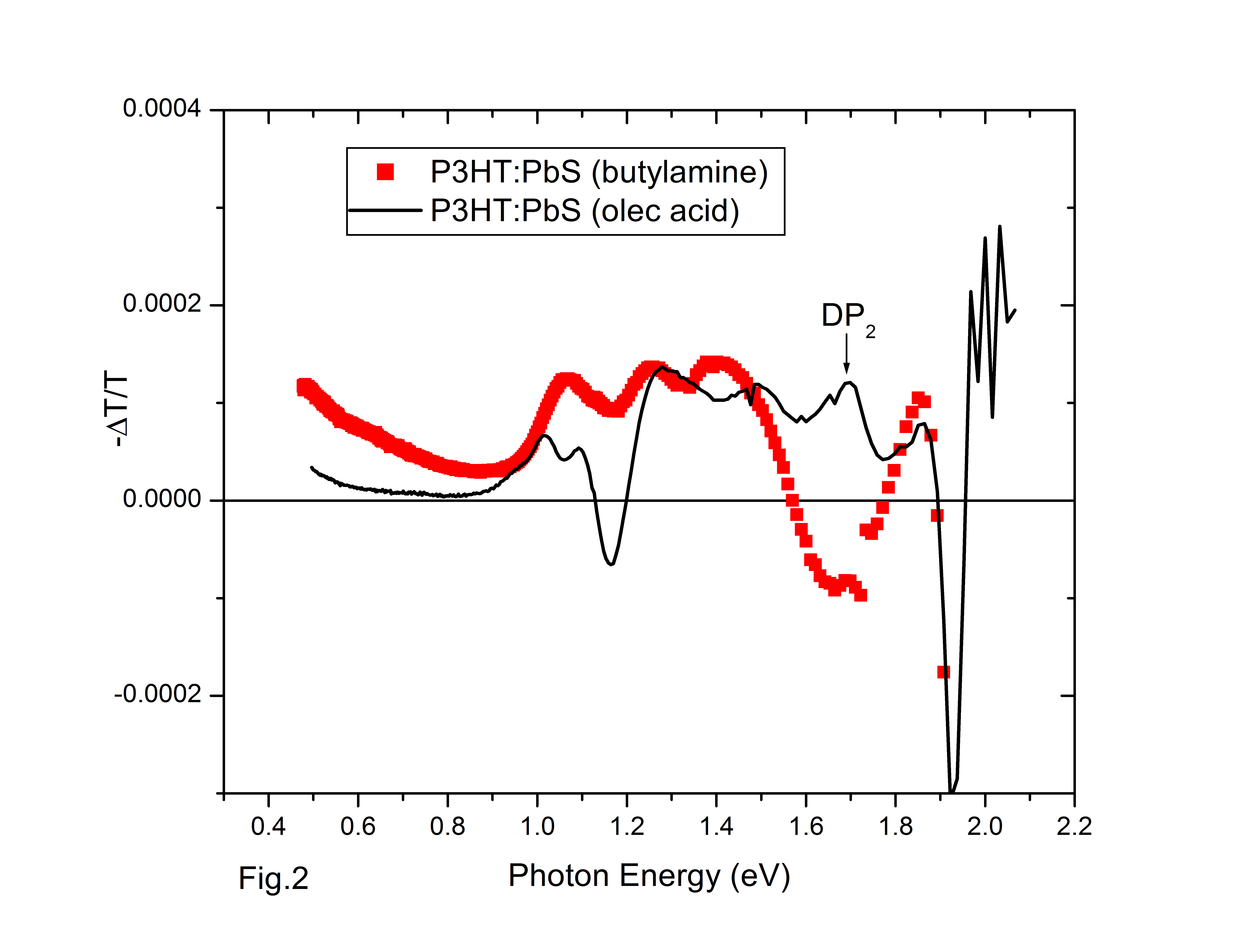AmericanChemicalSociety.com
Reports: G10 47107-G10: Nanocomposite of Infrared Quantum Dots and Conducting Polymers: Possible Multiple Exciton Dissociation
Xiaomei Jiang, University of South Florida
Objectives:
The goals of the 3rd (1st extended year) grant year (09-10) was to continue investigating factors affecting exciton dissociation process in neat PbS quantum dots, and in hybrid PbS/PbSe (QDs) with conducting polymers. This year’s work focus on the characteristics of a long-lived gap state we have previously discovered. Appropriate QD devices were fabricated and characterized.
Status of effort:
This year has seen our multi-tier efforts and results:
1) Investigation of gap state in PbS QDs
Exciton
states in lead selenide (PbSe) and lead sulfide (PbS) quantum dots have been
studied extensively. However, relatively less attention has been paid to the
states within the quantum dots bandgap. Our experimental results have revealed
a single in-gap state which bears confinement dependence yet can not be
explained by dark exciton theory, nor is it a trap state related to quantum
dots surface defects as previously observed. A detailed analysis of temperature dependence of photoluminescence,
Stokes shift, absorption and photoinduced absorption reveals the unconventional
G.S. is a new state of trapped exciton in QD film. With appropriate
design engineering these trapped excitons might be harvested in solar cells and
other optoelectronic devices.
Fig. 1 Temperature
dependences of PL (solid square, black) and the first excitonic absorption E1
(open triangle, red) of a 4.2nm QD film. Black line is a linear fitting of PL data,
and red line is fitting for E1, at T > 50K. The inset is a plot
of temperature dependence of PL intensity (solid diamond, black) 2) Ligands
effect on exciton dissociation process Following the ligand exchange effort of
PbS QDs from last year, using a unique technology established in 2008 5). Training of graduate students on
special optical characterizations In
addition to Jason Lewis and Sheng Wu, who have jointed contributed to the
findings of gap state characteristics Accomplishments/New findings: This
year’s research resulted in 1 high-profile journal publications We believe the finding of the
unconventional gap state is a novelty, since this state is a new state of trapped exciton in QD film. With appropriate design engineering
these trapped excitons might be harvested in solar cells and other
optoelectronic devices. Interactions/Transitions: 1)
Participation/presentations at meetings, conferences: ·
Jason
Lewis, Jian Zhang and Xiaomei Jiang (2010). ‘Unconventional gap state in lead sulfide
quantum dots; relevance to photovoltaic devices’, oral talk presented at the APS 2010 March Meeting, 2) Collaboration/consultation: Our
lab has continued our inter-institutional collaborations with Dr. Sun’s
research group in Technical impact: So far the results we have
obtained with this grant are of paramount importance for the continuous
research effort on possible multiple exciton dissociation in hybrid solar
cells. Our findings about photoinduced charge transfer and the unique technique
developed to probe it will help understand the essential process of exciton
dissociation and give us a guideline to achieve high efficiency of the third
generation solar cells, which has immediate impact on the cost-effective
utilization of renewable energy. Broader impact: I have always been grateful for the
ACS-PRF grant, the first external grant I have received. This grant has given
me the initial support I needed in my career development, and it has helped me
secure my current grants from New Energy Technology Inc and Florida High
Technology Corridor Fund, through which my group has successfully made a
prototype see-through SolarWindow, with much media reports References:

Copyright © American Chemical Society


